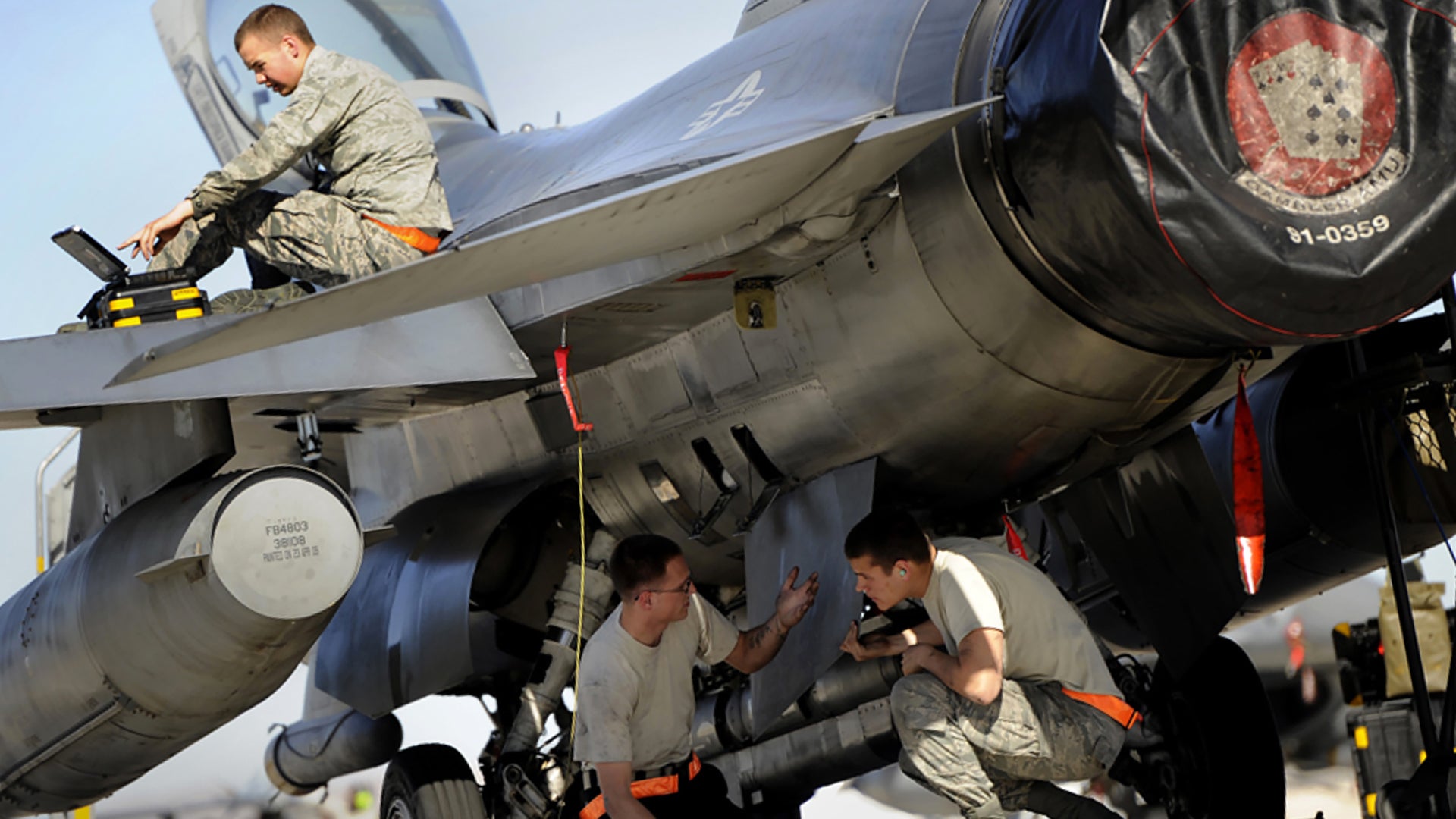The reliability of various USAF aircraft has always been a hot topic within defense circles, but the reality of keeping different platforms in the air has made mainstream news as of late. At the same time, the average person seems to be a bit surprised by the actual number of different types of aircraft in the Air Force’s inventory. So a simple chart showing both metrics would be very helpful, and that’s exactly what our friends over at Scramble posted on their Facebook page recently.
The list, which was sourced from the USAF’S data by the Air Force Times, includes four years of mission capable rate (aircraft can fly with all combat systems functional) data as well as the historical change for each platform, for better or worse. The inventory as of 2017 for each aircraft is also posted in its own column.
Some may be surprised that even with all the USAF’s complaining about how old and unreliable the airframes are, the E-8C JSTARS was still able to pull off a mission capable rate of 64 percent in 2017, and a respectable 76 percent in 2016.

Meanwhile the relatively small fleet of F-22s hit an abysmal 49 percent—basically you need two aircraft available for one sortie—in 2017, down from a paltry 60 percent the year earlier. This is the cost of flying a low-observable, “thoroughbred” fighter. Considering only about 125 are combat coded for front line service at any given, this figure is even more troubling.
Over a decade after taking its first flight, the F-35A continues to struggle as well with a 55 percent mission capable rate. This has been a major story as of late, and even though the USAF and Lockheed Martin are working to increase the aircraft’s availability, still only around half are available at any given time. The test fleet full of early examples also draws down this number, but the cost of upgrading those jets to current standard is going to be very high, and still they are unlikely to be on an equal level with their newer counterparts.

The C-5M Galaxy—a re-engined and updated refit of earlier C-5 models—continues to struggle. This is especially troubling considering the massive investment in these aircraft to make them more reliable and the drawdown of the fleet. Its mission capable rate has steadily dropped since 2015 to a troublesome 60 percent in 2017. Meanwhile the C-17 continues to be a workhorse with an 84 percent mission capable rate, which is among the highest in the entire fleet.
Although the Air Force is working to replace at least the missile silo tender and security helicopter part of its aging UH-1N Twin Huey force, the aircraft still have an outstanding mission capable rate of 84 percent.

The Air Force Training Command’s T-1 trainer fleet, which isn’t disappearing anything soon, has an abysmal 56 percent mission capable rate. That is breathtakingly low considering it is essentially a modified version of the Hawker/Beechcraft 400A business jet, which has a good reputation for reliability.
What’s your take on this information? Let us know in the comments section below.
Contact the author: Tyler@thedrive.com
